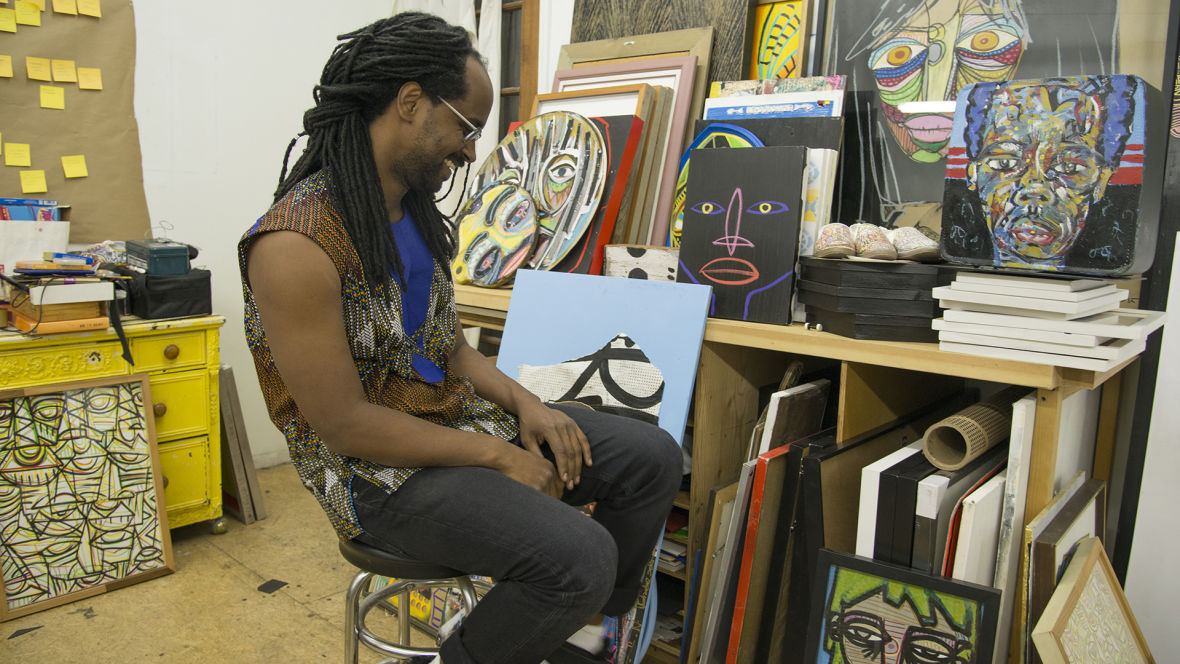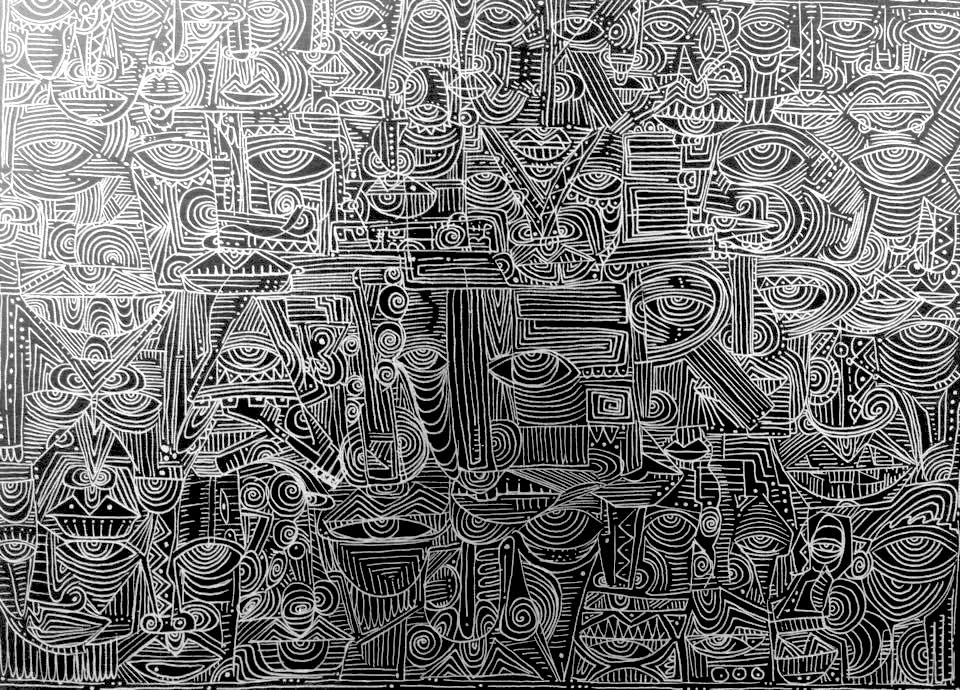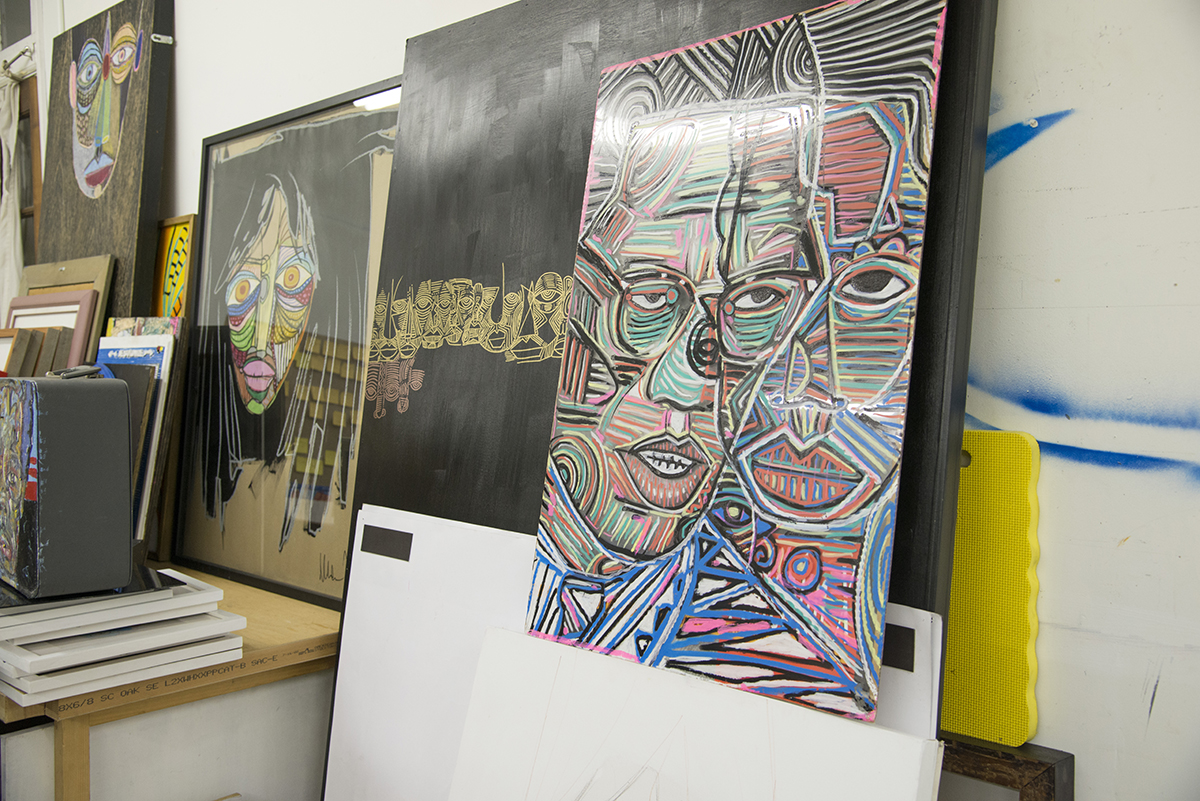One of the things I’ve learned from writing this series is that it’s always better to see a painter’s work in their studio. Yes, the gallery and the museum have their little auras and theatricality, but the studio is the architectural organization of how paintings come to be.
I met Mahader Tesfai at the studio he shares with two other artists in uptown Oakland. Stevie Wonder’s Songs in the Key of Life spun on the turntable as we talked and looked at his works: I don’t want to bore you with it / Oh but I love you, I love you, I love you.
In Tesfai’s space, his works are to be seen, touched, held, moved and rearranged. His practice adapts to the medium and the surface: glow-in-the-dark paint on white canvas shoes, 3D glasses and a Stevie Wonder soundtrack.
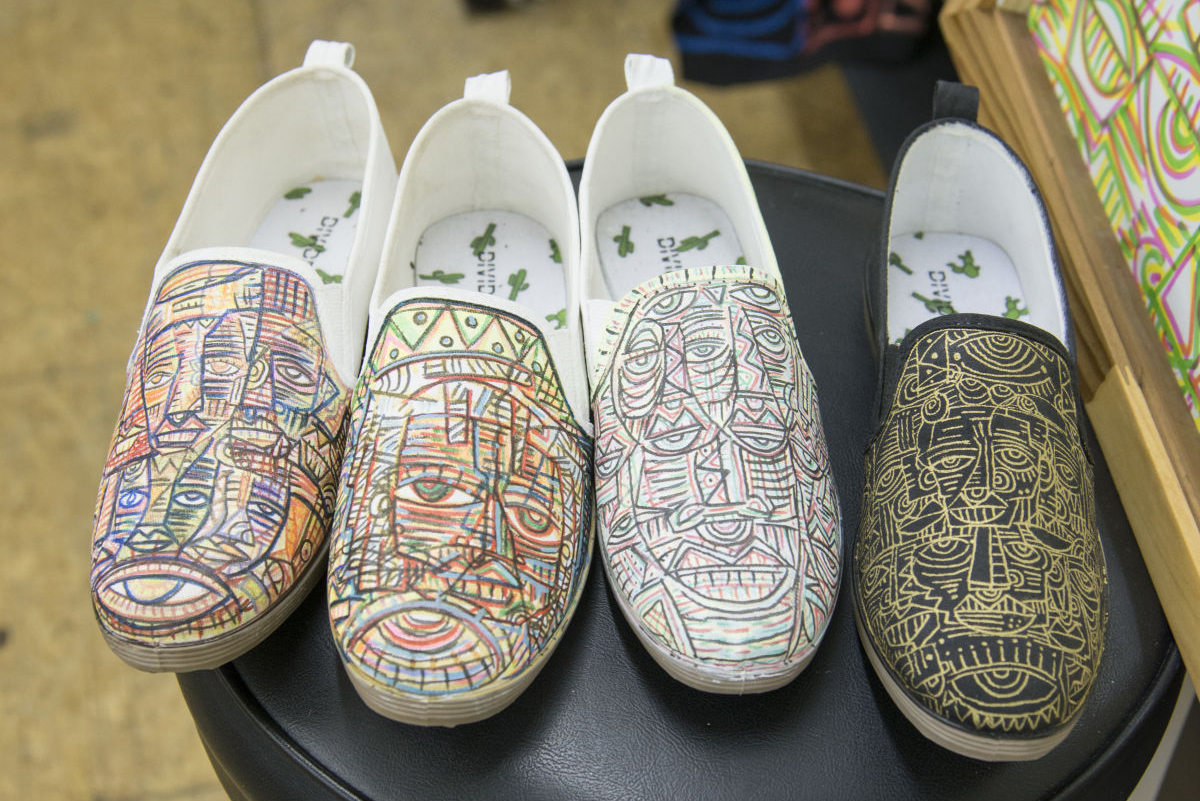
Mahader Tesfai was born in Eritrea and raised in the Bay Area. He earned a B.A. in Black Studies from UC Santa Barbara. Eritrea, Oakland, Santa Barbara; these are the places he’s from, and each resonates in his paintings. The stylization with which he renders his faces hearkens back to East African figurative works. Oakland is everywhere, from the surrealist couture of his painted t-shirts to the tradition of radical politics his paintings thematize. Finally, his studies in Santa Barbara, a place demographically far different from Oakland, permeate the theoretical underpinnings of these paintings.
Tesfai only started painting after college, where his studies in Black theory and history influenced his developing interest in visual art. He centers Black bodies and lives in his paintings. With a nuanced understanding of how those bodies and lives have appeared in a racist Western painting tradition, his work stages a formal refusal to participate in and reiterate that bad legacy.
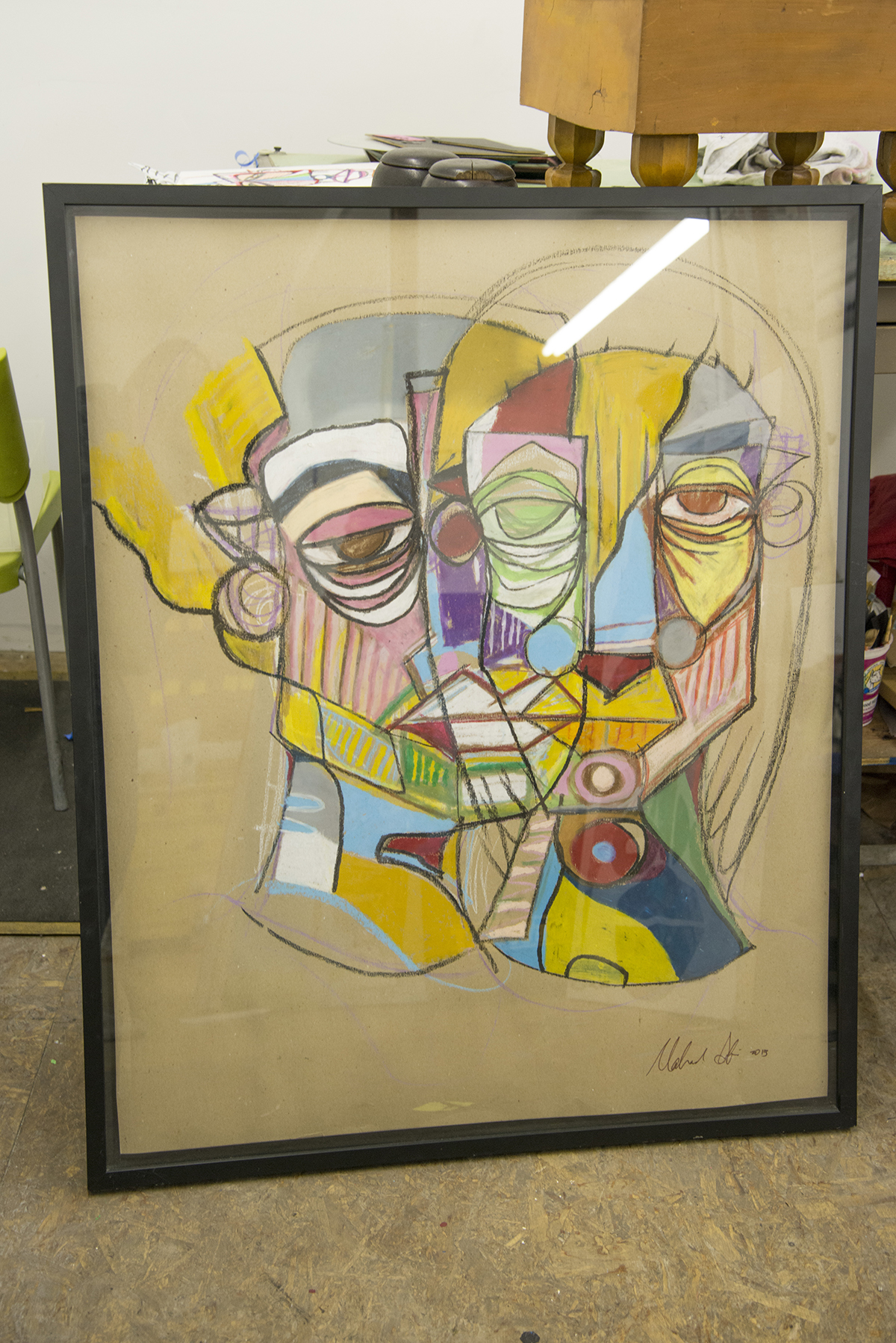
Just as these places, the places from which Tesfai hails and regards in his work, offer wildly different social ecologies, imagery and sensory information, the styles he accommodates in his work are also extremely varied. Thematically, however, they are made coherent by the centrality of Black faces.
